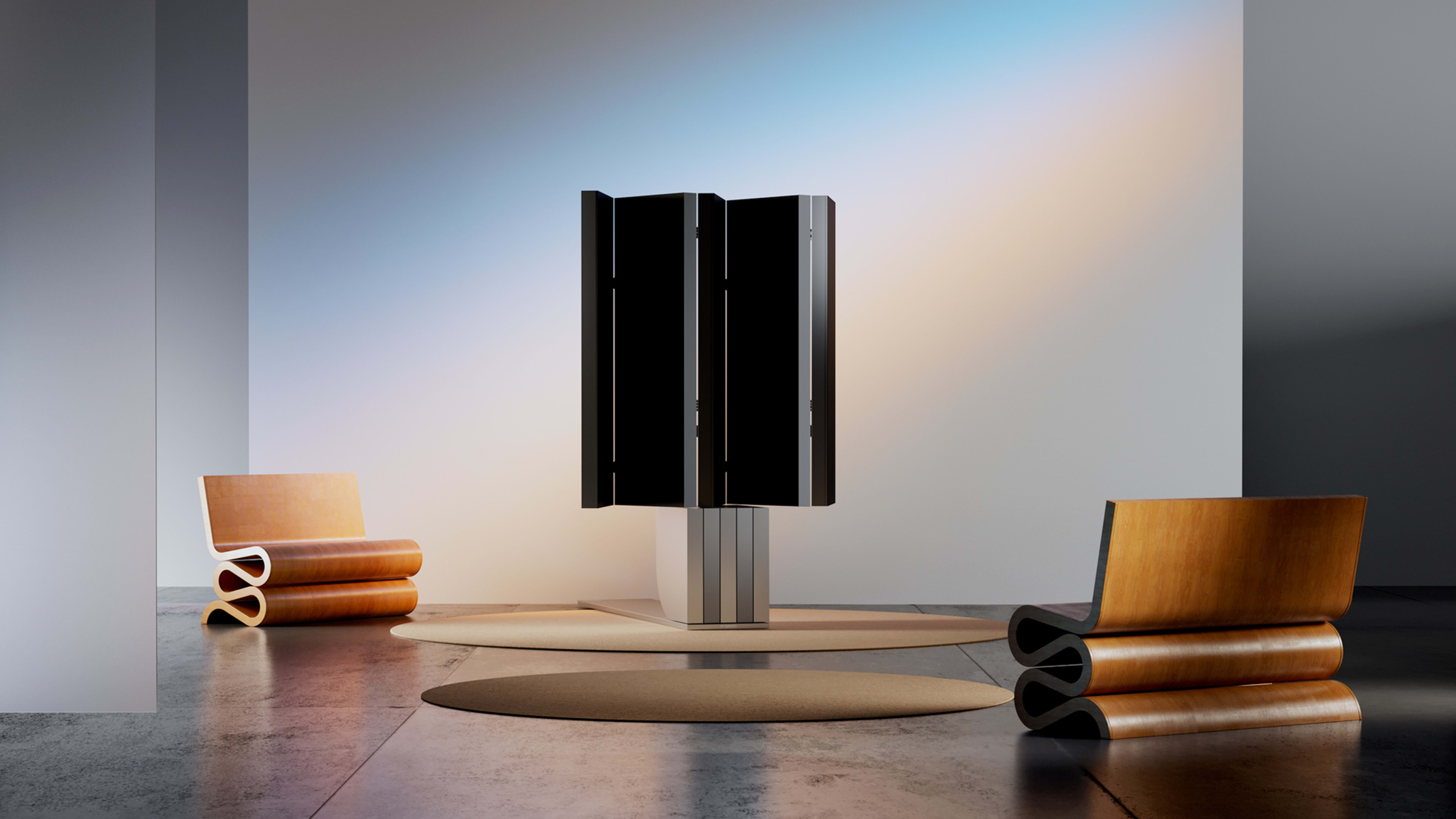The TV has come a long way since it was first introduced in the late 1920s. First it was a bulky wooden box with a tiny screen and a grainy, grayscale image. Now, it’s a high-definition flat screen with 8k resolution, OLED technology, and a wealth of content to stream.
In today’s market, buyers are presented with a vast array of options, but when you strip away the bells and whistles, most TVs are pretty decent these days. The image is crystal clear. The brightness is top notch. The sound quality is excellent. And tangled wires are slowly disappearing from our field of vision. So, what’s left to innovate?
If CES 2024 is any indication—lots.
For more than 55 years, CES, the world’s largest tech event, has been synonymous with groundbreaking—if not always strictly necessary—innovation. This has been particularly true of televisions, which have long served as an arena for daring experimentation. Because if most TVs are good enough, then no TVs are good enough. And if no TVs are good enough, then manufacturers have to bend over backwards to redefine what “good enough” means with ever wilder concepts.
For a while, the goal was bigger screens with slimmer profiles. Then the goal was crisper resolution, and better brightness. Now, at least according to eternal rivals LG and Samsung, the goal appears to be transparency, as Fast Company‘s Mark Wilson noted in his CES trend roundup. Indeed, both companies unveiled a transparent screen at CES. LG’s 77-inch TV is wireless and can be affixed pretty much anywhere from a wall to a floating shelf. It will be released later this year. Samsung’s micro-LED screen is only a prototype at this stage, but it comes with a frameless design and an even more transparent glass panel that makes it easier for the screen to disappear into the background when not in use.
But what’s the actual use case for a transparent TV? James Fishler, head of home entertainment at Samsung Electronics America, shied away from sharing specific examples, writing in an email that the transparent Micro LED is a “beautiful screen for homes and businesses” and that the options are endless. “Samsung believes that your TV is more than just a screen; it’s the smart hub for your home and can be so much more than just a black box,” he said, also citing the company’s Frame TV, whose matte display makes it possible for the screen to camouflage as a painting when it’s off.
Meanwhile, another company called C SEED made a splash at CES with its C SEED N1 TV—a 165-inch screen that dramatically unfolds like an accordion. (It also comes in 137 and 103 inches.) When not in use, the TV looks like a sleek metal bench. Then at the press of a button, the bench rises up and ripples open into a full screen. A spokesperson told Fast Company in an email that C SEED N1 TV is meant to look like a sculpture when folded, and that it can be used in private luxury homes, commercial spaces, or on super yachts. The foldable extravaganza comes with the dizzying price tag of $200,000.

Funnily enough, C SEED’s philosophy stands in stark contrast to LG and Samsung’s endeavors. One side wants to conceal your TV, the other wants to shine a spotlight on it. I, for one, am perfectly content with my run-of-the-mill, wall-mounted TV whose brand I can’t even name. But as CES draws to a close, it has been entertaining to watch tech giants fighting to outshine each other—all through the lens of the humble TV.
Recognize your brand’s excellence by applying to this year’s Brands That Matter Awards before the final deadline, June 7.
Sign up for Brands That Matter notifications here.
